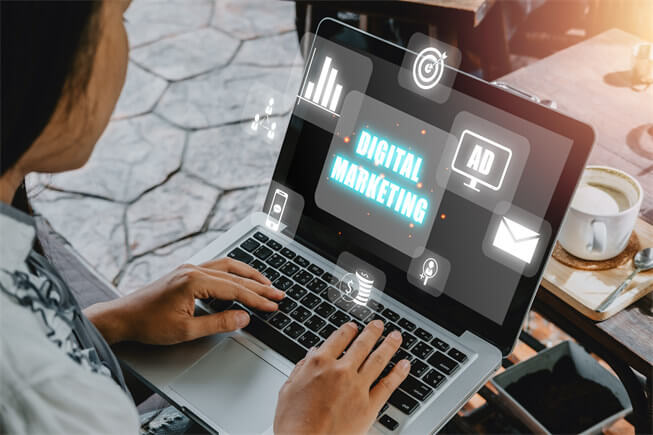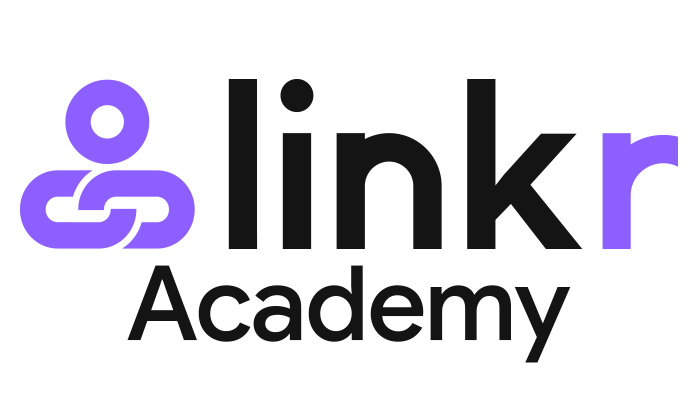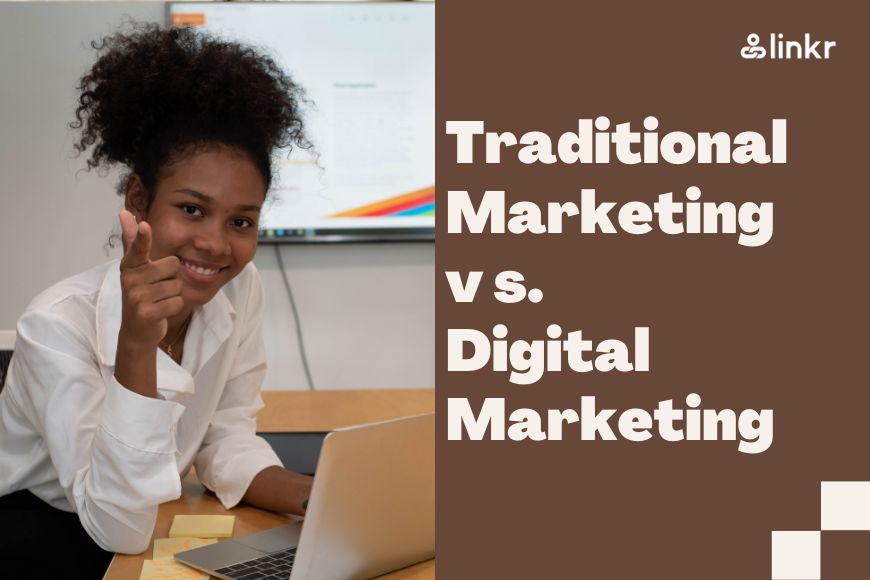Traditional Marketing vs. Digital Marketing: How to Choose
When it comes to promoting your business and reaching your target audience, the choice between traditional marketing and digital marketing can be challenging. Both approaches have their merits and can yield successful results, but understanding their differences is crucial in making an informed decision.
In this article, we will explore the key aspects of traditional marketing and digital marketing and provide insights on how to choose the right strategy for your business.
Table of Contents
Traditional marketing v s. digital Marketing: comparing the differences
| Aspects | Traditional Marketing | Digital Marketing |
| Channels | Print media, television, radio,direct mail, billboards, events, etc. | Search engines, social media platforms,email marketing, content marketing, etc. |
| Reach | Broad audience reach | Global reach with precise targeting |
| Targeting | Less targeted | Highly targeted based on demographics, interests, behavior, etc. |
| Cost | High cost | Cost-effective with various budget options |
| Measurability | Difficult to measure ROI | Real-time tracking and analytics |
| Engagement | Limited interactivity | Enhanced engagement throughcomments, likes, shares, etc. |
| Flexibility | Less flexibility for quick adjustments | Easy modifications and optimization based on real-time data |
| Conversion Rates | Can be lower due to broader audience | Higher conversion rates due to targetedmarketing efforts |
| Personalization | Limited personalization options | Personalized messages and experiences |
| Competition | High competition for attention | Lower competition with niche targeting |
| Customer Relationships | Less interactive, one-way communication | Interactive, two-way communication withcustomers through various channels |
It’s important to note that the effectiveness of each marketing approach may vary based on factors such as industry, target audience, and business goals. Hence, it’s crucial to carefully evaluate these aspects before deciding on the most suitable marketing strategy for your business.
Traditional marketing: leveraging traditional channels

Traditional marketing encompasses various offline channels, including print media, television, radio, direct mail, billboards, and events. This approach relies on reaching a broad audience through traditional means of communication.
While traditional marketing has a proven track record, it can be costly, less targeted, and challenging to measure in terms of effectiveness. However, it still plays a significant role in industries or demographics where digital adoption is limited.
Benefits of traditional marketing:

- Wide audience reach through print media, television, and radio, even for non-online audiences.
- Tangible advertising such as billboards, flyers, and direct mail create lasting impressions.
- Local targeting is good for businesses with a localized customer base.
- Consistent use of traditional marketing channels reinforces brand recognition.
- Consumers can be won over by using traditional marketing techniques like print adverts in reliable periodicals.
- Non-intrusive advertising experience: Consumers can come across advertisements passively in their daily lives.
Digital marketing: embracing the power of online platforms

Digital marketing revolves around leveraging online channels such as search engines, social media platforms, email marketing, content marketing, and influencer collaborations. This approach offers extensive reach, precise targeting options, cost-effectiveness, and real-time campaign tracking and analysis.
Digital marketing enables businesses to connect with their audience on platforms they frequent, personalize messages, and measure the return on investment more accurately. Further read What is Digital Marketing: Overview, Challenges, and Required
The benefits of digital marketing

- Digital marketing offers a wide range of benefits that make it an attractive choice for businesses.
- The ability to precisely target your audience ensures that your message reaches the right people at the right time.
- Real-time tracking and analytics enable you to measure the effectiveness of your campaigns and make data-driven decisions.
- Digital marketing also facilitates interaction and engagement with customers, fostering stronger relationships and brand loyalty.
- As online transactions and e-commerce continue to grow, digital marketing aligns with the evolving consumer behavior, enabling businesses to meet customers where they are.
Key factors to consider when choosing traditional marketing or digital marketing

There are several key factors that should be taken into account when deciding between traditional and digital marketing.
Firstly, it is important to consider your target audience and their preferred channels of communication. If your audience spends a lot of time online and engages with digital platforms, digital marketing may prove to be a more effective approach to reach them. However, if your audience is not as active online, traditional marketing could still be a viable option.
Secondly, think about your marketing goals and spending plan. Digital marketing is frequently more affordable, especially for small businesses with constrained budgets. In comparison to more traditional marketing strategies like print or television advertising, it offers a wide range of possibilities, including social media marketing, email marketing, and search engine optimization. All of these can be used at a cheaper cost.
Thirdly, it is important to assess the scalability and flexibility of each approach. Digital marketing allows for quick adjustments and optimizations based on real-time data. This means that you can make changes to your campaigns as you go along, ensuring that they remain effective and that you’re getting the best return on your investment. On the other hand, traditional marketing may require more time and resources for modifications.
In summary, when deciding between traditional and digital marketing, it is essential to consider your target audience, marketing objectives, budget, and scalability and flexibility of each approach. By understanding these key factors, you can make an informed decision that will help you achieve your marketing goals in the long run.
Using Linkr to improve your digital marketing

To maximize the impact of your digital marketing efforts, leveraging tools like Linkr can be highly beneficial. Linkr is an innovative platform that connects businesses with relevant influencers amplifying their brand message to a larger audience.
By collaborating with influencers through Linkr, businesses can expand their reach, enhance brand awareness, and drive engagement. The platform offers features such as online store creator, link in bio website builder, short links, QR code generator, and performance analytics. These capabilities empower businesses to streamline their digital marketing strategies and achieve better results.
Final thoughts
Choosing between traditional marketing and digital marketing requires consideration of your business goals, target audience, resources, and budget. Although traditional marketing has value in certain contexts, digital marketing offers advantages such as precise targeting, real-time measurement, and cost-effectiveness.
By embracing digital marketing and using tools like Linkr, businesses can enhance their online presence, engage with their audience, and drive results. Understand your target market, evaluate your marketing objectives, and select the approach that aligns best with your business goals and resources.
Read more:
How to Do Digital Marketing for Micro Influencer
Digital Marketing for Artists: 9 Essential Strategies for Online Success




